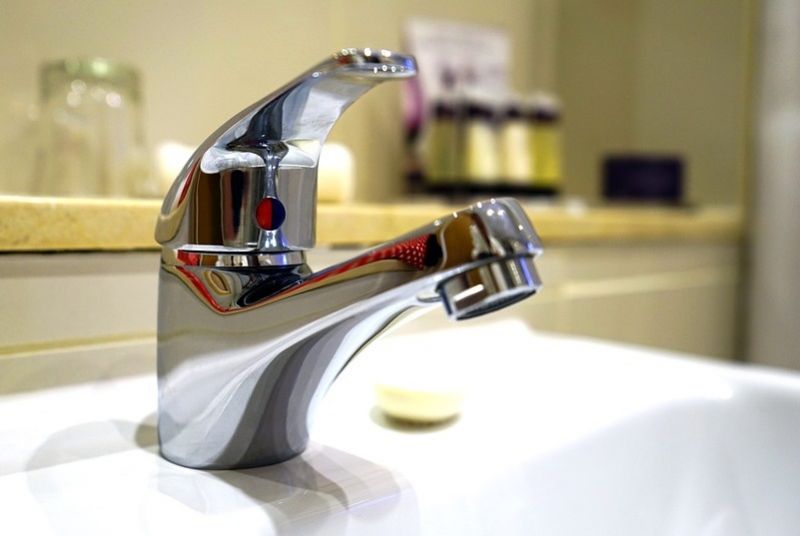Removing Microplastics from Tap Water Starts at Treatment Plants
Published on by Water Network Research, Official research team of The Water Network in Technology
The use of microplastics in clothing and smaller plastic "nanoparticles" used in the cosmetics industry has helped to create a "chemical soup" of our once clean drinking water.
How do microplastics get into our fresh water sources?
 One of the main sources is our clothing. Minuscule fibers of acrylic, nylon, spandex, and polyester are shed each time we wash our clothes and are carried off to wastewater treatment plants.
One of the main sources is our clothing. Minuscule fibers of acrylic, nylon, spandex, and polyester are shed each time we wash our clothes and are carried off to wastewater treatment plants.
According to a recent study cited by Water World, more than 700,000 microscopic plastic fibers could be released into the environment during each cycle of a washing machine.
A study in 2016 commissioned by clothing company Patagonia and conducted by researchers at the University of California, Santa Barbara, found that washing a single synthetic jacket released an average of 1.7 grams of microfibers.
A second study commissioned by the clothing company began in March this year and is being conducted by scientists at North Carolina State University with the goals of better understanding the characteristics of fibers and fabrics that lead to microfiber release.
Microbeads and the damage they pose to our health and the environment
Microbeads are even worse than microfibers. Microbeads are solid plastic particles of less than one millimeter in their largest dimension. The particle sizes range from 10 micrometers (0.00039 inches) on up to one millimeter (0.039 inches).
Solutions to removing microplastics in fresh water
You would think that a wastewater treatment plant would be able to remove microplastics from sewage and other effluents. And while many in the U.S. and UK do have a success rate of 98.41%, there is more to that figure than meets the eye.
Despite this large reduction, a study published in May 2016 found that a wastewater treatment plant claiming the high success rate still was releasing 65 million microplastics into the receiving water every day.
A significant proportion of the microplastic accumulated in and was removed during the grease removal stage, and it was only in this degreasing stage that any microfibers were found.
The plant was handling so much effluent every day that despite the efficient removal rates achieved by this modern treatment plant, even a modest amount of microplastics being released per liter of effluent could result in significant amounts of microplastics entering the environment.
This means those elusive little pieces of plastic get discharged with "clean water" into rivers and streams with some of it entering our water treatment plants. This is where another problem arises. Many kinds of microplastics have hydrophobic surfaces that adhere to common pollutants like polychlorinated biphenyls (PCBs).
These chemicals would rather be ‘stuck’ to surfaces like plastic than in the water itself. If these compounds are highly concentrated on plastic, and then ingested by animals, (or humans) the chemicals can desorb - become unstuck - in the low oxygen environment inside the gut, leaving the animal or human at risk of exposure to toxic chemicals, says Timothy Hoellein, an associate professor of Biology at Loyola University Chicago.
Water and wastewater treatment plants will play a major role in microplastics removal
Dr. van Sebille, with the Imperial College in the UK, speaking during the fourth meeting of the Environmental Audit Committee in the House of Commons last year, argued that tackling microplastic pollution is about identifying intervention points, “where it is most efficient to intervene and where it is most efficient to do something about the release.”
Dr. van Sebille also cited a study of water treatment plants in the Chicago, Illinois area, and suggested sand filters may be effective in capturing both fibers and microbeads. He pointed out that the study found a reduction in microplastics of 85 percent. However, Dr. van Sebille noted that "a sand filter might work very well, but the problem is once you go into that, at some point you have to backflush your sand filter, you have to push it back, and then what do you do with that sludge?"
The bottom line is evident - Water treatment plants, those plants treating drinking water, have no agreed upon methodology for taking plastic pollution measurements or removing the plastic particles.
Source: Digital Journal
Media
Taxonomy
- Public Health
- Environmental Health
- Sludge Treatment
- Drinking Water Treatment
- Micropollutants
- Water Treatment & Control
- Waste Water Treatments
- Wastewater Treatment
- Water Treatment Solutions
- Polymers & Plastics
- Health & Safety
2 Comments
-
If anyone wants more clarification, you ought to visit your regional water treatment plants, and you would clearly see my points earlier in the comment. Those WWTPs are gigantic, and massive scale. Not so easy to change or install small changes.
-
Back in 2000s, Waste Water Treatment Plants were not designed to remove the micro beads and fibres of all plastic kinds. With that the fact that WWTP, once built, stays for decades, I do not believe that, unless WWTP is built to specifically designed to remove those micro plastics, are not going to be able to remove any micro beads and plastics.
It may be far too optimistic and illusory to believe that those micro beads and plastics that are often not visible to our naked eyes are removed at any high success rates. even today. Unless removal technology is specifically deloloyed for those beads.